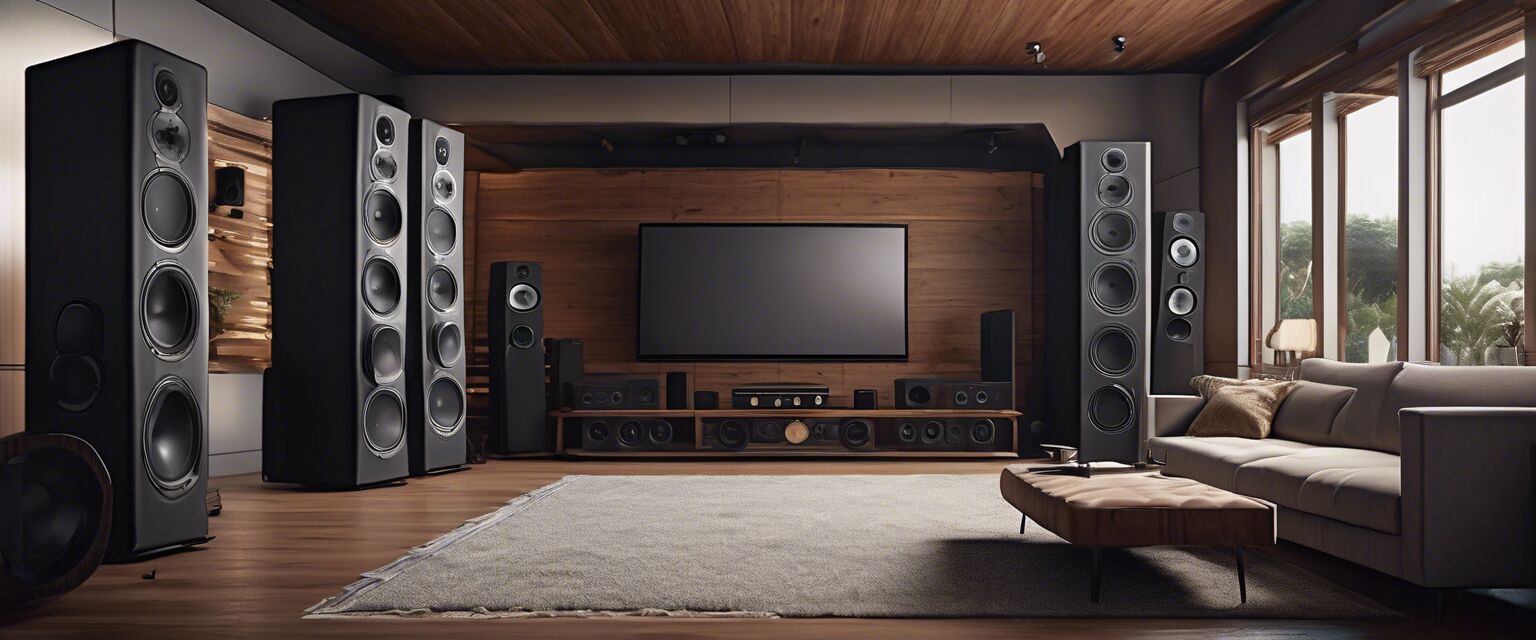
A Beginner's Guide to Speaker Placement
Key Takeaways
- Correct speaker placement can dramatically improve sound quality.
- The distance between speakers and walls, as well as the listener's position, are crucial.
- Experimentation is key; small adjustments can make a big difference.
- Consider room acoustics and furniture layout for optimal sound.
Understanding how to position your speakers can seem daunting at first, but with some practical tips and a little experimentation, you can easily enhance your audio experience. In this guide, we’ll walk you through the fundamentals of speaker placement to achieve optimal sound quality.
Why is speaker placement important?
Speaker placement is the difference between mediocre sound quality and a truly immersive audio experience. Proper positioning allows you to enjoy clear, balanced sound where every note comes to life. The right placement can also minimize the effects of room acoustics that might otherwise alter how sound is perceived.
Understanding sound waves
Before placing your speakers, it's essential to understand how sound waves travel. Sound waves emanate from the speaker in all directions, bouncing off walls and furniture. Here are a few factors to consider:
- Room size and shape
- Types of materials in the room (soft fabrics vs. hard surfaces)
- Potential obstacles that may interfere with sound distribution
Types of speaker setups
Choosing the right speaker setup for your space can influence how sound fills the room.
| Speaker Type | Description |
|---|---|
| Stereo Speakers | Best for providing a balanced sound in a home setup. |
| Surround Sound | Includes multiple speakers for an immersive audio experience. |
| Wireless Speakers | Easy to place anywhere without being tethered to devices. |
Practical tips for speaker placement
Here are some practical tips to help you get started with positioning your speakers:
- **Start with the basics**: Position the left and right speakers at ear level, ideally forming an equilateral triangle with the listening position.
- **Avoid corner placement**: Keep speakers away from the corners of the room as this can cause unwanted bass buildup and muddiness.
- **Ear height matters**: If possible, ensure that the tweeters are at ear level when you are seated to achieve the best sound clarity.
- **Placement from walls**: Aim for a distance of at least 1-2 feet from walls to reduce reflections that can muddy the sound.
- **Experiment with angles**: Tilting your speakers slightly towards the listening area can improve clarity and imaging.
Furniture arrangement and acoustics
Don’t overlook your furniture when setting up your speakers. Sofas and curtains can absorb sound, while hardwood floors and glass surfaces can reflect it. Consider the following:
- **Rug placement**: Rugs can help absorb sound in larger rooms.
- **Curtains**: Heavy drapes can reduce echo and overall reverberation.
- **Avoid clutter**: Minimize obstacles that may block sound paths between the speakers and the listening position.
Fine-tuning your setup
Once you have your speakers in place, take some time to fine-tune your setup. Here are some steps to help achieve the best sound:
- **Listen and adjust**: Play your favorite tracks and adjust speaker positions based on what sounds best.
- **Use a sound meter**: If you're serious about audio, consider investing in a sound measurement tool to find optimal sound levels and adjust accordingly.
- **Consider professional help**: If you're unsure, consulting a professional can lead to significant improvements. Check out our buying guides for more tips on speaker systems that match your needs.
Common mistakes to avoid
A few common mistakes can undermine your audio experience. Be aware of the following:
- **Overlooking speaker height**: Ignoring height can greatly influence sound clarity.
- **Neglecting room acoustics**: Disregarding how furniture and materials can influence sound quality.
- **Static setup**: Not being willing to adjust or experiment with speaker placement over time.
Pros
- Improved sound quality.
- Enhanced clarity and detail in audio playback.
- Customized listening experience tailored to your room.
Cons
- Can be time-consuming to find the perfect setup.
- Room acoustics can be unpredictable.
Conclusion
In conclusion, optimizing your speaker placement can transform your listening experience, making it rich and immersive. By understanding sound dynamics and carefully considering your room setup, you can create an audio environment that suits your preferences. For more insights, check our other articles on news and trends in the audio world and explore our soundbars collection to complement your audio setup.